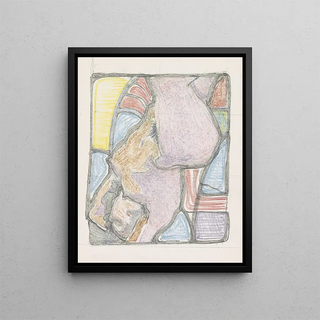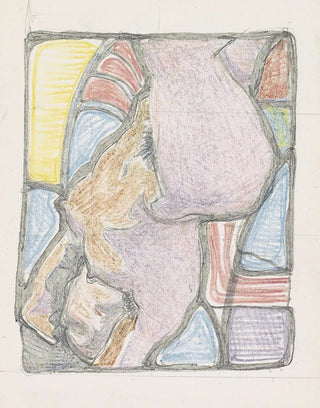Art print | Nude woman lying down - Reijer Stolk


View from behind

Frame (optional)
Reijer Stolk's artwork titled "Femme nue allongée" is a piece that transcends mere observation to invite deep contemplation. This painting, both intimate and universal, evokes the beauty of the female form in its purest shape. Stolk manages to capture an essence of sensuality while maintaining a certain delicacy. The piece, through its evocative nature, encourages viewers to explore the nuances of vulnerability and artistic expression. The graceful posture of the reclining figure, along with the subtle play of shadows and light, creates an atmosphere that is both serene and emotionally charged. It is an invitation to immerse oneself in a world where art and beauty meet.
Style and uniqueness of the work
Reijer Stolk's style is distinguished by its realistic approach and his ability to render the human body with striking precision. In "Femme nue allongée," every curve is carefully studied, every detail highlighted, demonstrating undeniable technical mastery. The color palette chosen by the artist, both soft and warm, enhances the intimate aspect of the scene. The light, gently caressing the woman's skin, creates a subtle contrast between shadowed and illuminated areas, emphasizing the three-dimensionality of the figure. Stolk does not merely depict a body; he evokes an emotion, a story, a human connection. This art print is an ode to female beauty, but also a reflection of the artist's sensitivity towards his subject.
The artist and his influence
Reijer Stolk, a Dutch artist, has established himself in the art scene through his unique approach and dedication to the art of the nude. Influenced by the great masters of classical painting, he has reinterpreted the codes of representing the human body through a contemporary lens. His work is rooted in a tradition that celebrates the beauty and complexity of the human figure, while incorporating modern elements that speak to our time. Stolk has also been a keen observer of society, which is reflected in his artistic choices and themes.

Matte finish

View from behind

Frame (optional)
Reijer Stolk's artwork titled "Femme nue allongée" is a piece that transcends mere observation to invite deep contemplation. This painting, both intimate and universal, evokes the beauty of the female form in its purest shape. Stolk manages to capture an essence of sensuality while maintaining a certain delicacy. The piece, through its evocative nature, encourages viewers to explore the nuances of vulnerability and artistic expression. The graceful posture of the reclining figure, along with the subtle play of shadows and light, creates an atmosphere that is both serene and emotionally charged. It is an invitation to immerse oneself in a world where art and beauty meet.
Style and uniqueness of the work
Reijer Stolk's style is distinguished by its realistic approach and his ability to render the human body with striking precision. In "Femme nue allongée," every curve is carefully studied, every detail highlighted, demonstrating undeniable technical mastery. The color palette chosen by the artist, both soft and warm, enhances the intimate aspect of the scene. The light, gently caressing the woman's skin, creates a subtle contrast between shadowed and illuminated areas, emphasizing the three-dimensionality of the figure. Stolk does not merely depict a body; he evokes an emotion, a story, a human connection. This art print is an ode to female beauty, but also a reflection of the artist's sensitivity towards his subject.
The artist and his influence
Reijer Stolk, a Dutch artist, has established himself in the art scene through his unique approach and dedication to the art of the nude. Influenced by the great masters of classical painting, he has reinterpreted the codes of representing the human body through a contemporary lens. His work is rooted in a tradition that celebrates the beauty and complexity of the human figure, while incorporating modern elements that speak to our time. Stolk has also been a keen observer of society, which is reflected in his artistic choices and themes.






